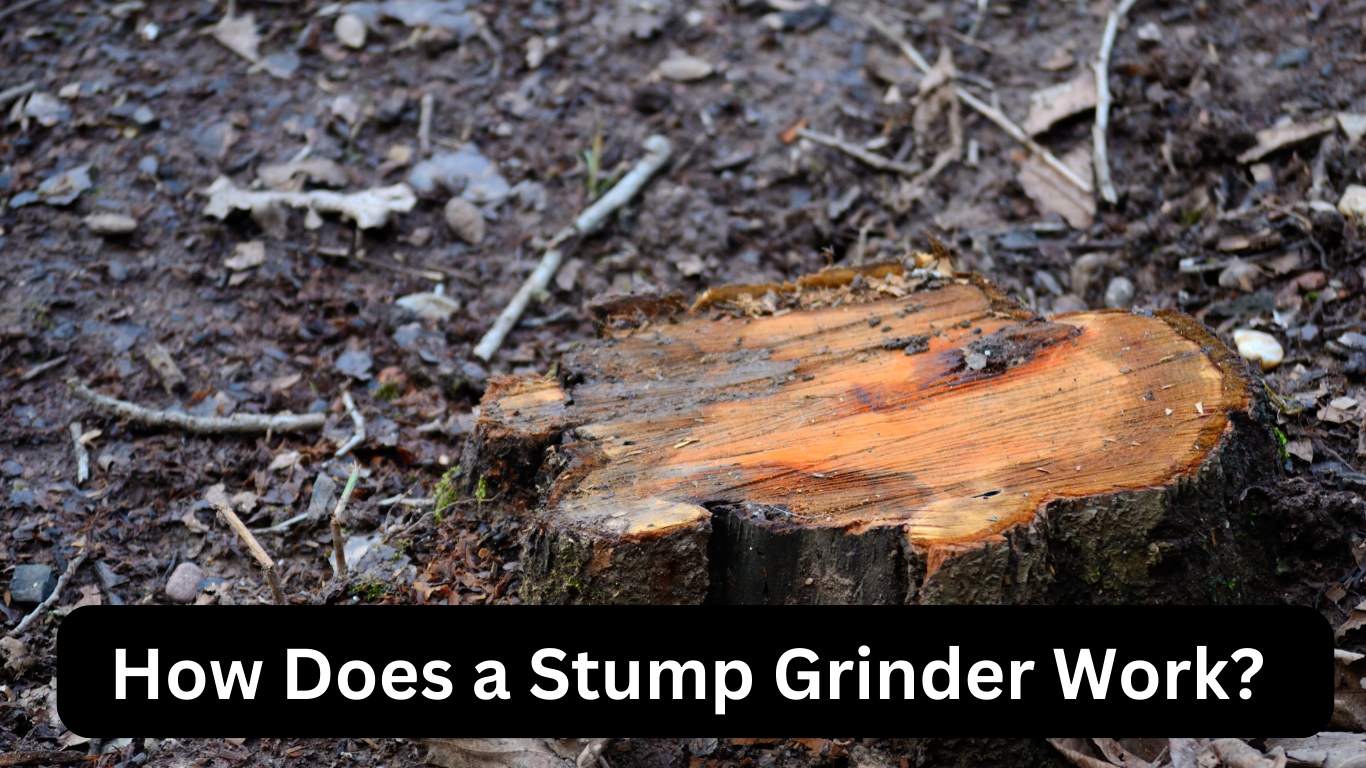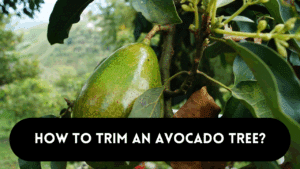Imagine having a freshly cut tree but a stubborn stump that refuses to budge. This is where a stump grinder comes to the rescue. A stump grinder is a specialized machine used to obliterate those leftover stumps. Beyond just being aesthetically pleasing, stump removal is necessary to stop regrowth, make room for new landscaping, and eliminate any risks. Let’s explore the specifics of stump grinder work and how they pull off this feat.
The Components of a Stump Grinder
At the heart of a stump grinder lies the cutting wheel, a pivotal component responsible for the grinding process. This wheel is powered by drive belts, which enable it to rotate at high speeds. Picture a circular saw blade on steroids – that’s the cutting wheel. Its rapid rotation and razor-sharp teeth transform the once-daunting stump into manageable wood chips.
How Does a Stump Grinder Work?
- Positioning the Stump Grinder: Imagine the stump grinder as a knight approaching its foe – the stubborn stump. It is wheeled up to the stump that requires removal, setting the stage for its inevitable defeat.
- Lowering the Cutting Wheel: Like a knight’s decisive strike, the operator controls the cutting wheel onto the tree stump. This mechanism ensures precision and control. The cutting wheel can also sway from side to side, ensuring that no part of the stump escapes its grinding prowess.
- The Grinding Process: As the cutting wheel spins at a whirlwind pace, its teeth chomp into the stump’s wood, reducing it to fragments. It’s akin to a giant pencil sharpener – only this time, it’s tree stumps getting the makeover. The grinding continues until the stump is reduced well below ground level, leaving no trace of its former existence.
Starting the Stump Grinding Process
The process of removing a tree stump using a stump grinder begins with the machine’s initial setup and setting.
Positioning the Grinder
The operator directs the machine over the stump to be removed, ensuring that the cutting wheel is correctly aligned with the wood. The correct location is critical to the grinding process’s efficacy.
Putting the Cutting Wheel to Work
After aligning the stump grinder, activate the cutting wheel. The cutting wheel is lowered onto the stump, making sure that the sharp teeth make even and complete contact with the wood.
Rotary Grinding
As the cutting wheel begins to rotate, it initiates the grinding process. The sharp teeth on the wheel efficiently cut through the wood, turning it into small wood chips and sawdust.
The grinding action continues as the operator guides the stump grinder back and forth over the stump. This approach guarantees that the cutting wheel works uniformly through the wood, gradually reducing the size of the stump.
Gradual Progression
Stump grinding is typically conducted progressively, with the operator controlling the depth and extent of the grinding process. The depth can be adjusted to cater to the operator’s preferences and the specific demands of the job.
This gradual approach, with controlled depth, ensures that the stump is efficiently and thoroughly removed, leaving behind minimal remnants below the ground surface.
Stump Grinding Cleanup
The operator’s job is not done until the stump has been ground down to the required level. The following step is to clean up the wood chips and sawdust created during the grinding operation.
The wood chips and sawdust may be recycled into landscape mulch, providing a sustainable and eco-friendly trash disposal alternative. They can also be appropriately disposed of in accordance with local legislation, guaranteeing environmental responsibility.
Handling the Resulting Wood Chips
Stump grinding yields heaps of wood chips – the remnants of the once-formidable stump. These chips aren’t mere waste; they have multiple practical uses. Gardeners rejoice as these wood chips can be used as effective mulch immediately.
Alternatively, they can be added to green waste for eco-friendly disposal. To further bury the stump’s legacy, the wood chips can be placed in the hole left by the stump to decay naturally, or the hole can be backfilled with soil, creating an even surface.
Diversity in Stump Grinder Types
Stump grinders aren’t a one-size-fits-all solution. They come in various shapes and sizes, catering to different removal needs. From hand-guided models suitable for small stumps to ride-on behemoths capable of tackling massive stumps, stump grinders offer versatility.
Moreover, depending on the grinder’s specifications, their power source varies – you’ll find gas-operated and diesel-operated variants. Some of these machines boast engines with astonishing power, reaching up to 74 horsepower.
The Benefits of Using a Stump Grinder
- Stump grinders outperform traditional stump removal procedures in a variety of ways.
- Stump grinding is an extremely efficient operation that completes the work very rapidly when compared to hand removal methods.
- The grinding process is extremely fast, allowing for the removal of several stumps in a short amount of time.
- Stump grinders are extremely successful at removing tree stumps, leaving no visible traces. As a result, the landscape is cleaner and more aesthetically pleasing.
Safety Considerations
When operating a stump grinder, safety is of the utmost importance. To avoid accidents and injuries, operators must take certain measures.
Operators should:
Wear adequate protective equipment, such as safety glasses, hearing protection, and protective clothes, to protect themselves from potential threats.
Maintain a safe distance from the grinder, making sure that no spectators are around while it is in use. The cutting wheel can generate flying debris; therefore, keeping a safe zone is essential.
Follow all safety rules and instructions supplied by the manufacturer to ensure that the stump grinding operation is both efficient and safe.
Environmental impact
Stump grinding is regarded as an environmentally beneficial stump removal process. Unlike chemical treatments, which may be harmful to the environment, stump grinding does not require the use of such substances. Furthermore, it avoids long-term disintegration of the stump, which can attract pests and contribute to landscape damage.
By opting for stump grinding as a technique of removal, homeowners and landscapers contribute to a cleaner, more ecologically aware approach to yard upkeep aligned with sustainable and eco-friendly practices.
Frequently Asked Questions
What are the Different Types of Stump Grinders Available?
Stump grinders come in various types, each tailored to specific needs and scale of work. These variants accommodate a diverse range of scenarios, from residential to commercial applications:
- Hand-Guided Stump Grinders: Compact and wieldy, these are suitable for smaller tasks. They’re operated manually and best suited for residential use.
- Self-Propelled Stump Grinders: Slightly more robust, these models incorporate self-propulsion, making them easier to manoeuvre. They strike a balance between residential and moderately sized commercial projects.
- Tractor-Mounted Stump Grinders: Attached to tractors or heavy-duty machinery, these are ideal for substantial tasks. They are commonly used in large-scale landscaping and commercial projects.
How Long Does It Take to Grind a Stump with a Stump Grinder?
The time required to grind a stump hinges on various factors, including the size of the stump, its wood density, and the power of the stump grinder. Generally, smaller stumps with softer wood take around 15-30 minutes, while more significant, denser stumps require a few hours. Complex root systems and soil conditions can also influence the timeframe. It’s advisable to consult a professional to get a more accurate estimate based on the specifics of your project.
What are Safety Precautions When Using a Stump Grinder?
Operating a stump grinder demands adherence to stringent safety measures:
- Protective Gear: Wear safety goggles, ear protection, gloves, and sturdy footwear to shield against flying debris and noise.
- Clear Area: Ensure the work area is free of bystanders and obstacles.
- Distance: Maintain a safe distance from the grinder during operation.
- Correct Handling: Use both hands to control the grinder and maintain proper footing.
- Check Machinery: Inspect the grinder before use to ensure it’s in proper working condition.
Does a Stump Grinder Remove the Entire Stump?
A stump grinder eliminates the visible portion of the stump, grinding it down to ground level or slightly below. However, the roots of the tree are usually left behind. Over time, these roots decay, contributing to the soil’s nutrient content. If complete stump removal, including the roots, is desired, more extensive excavation methods might be necessary.
How Long Does It Take a Stump Grinder to Grind a Stump?
The duration needed to grind a stump varies based on multiple factors. The stump’s size, wood density, and the grinder’s power all play a role. Smaller stumps with softer wood could take around 15-30 minutes, while more significant, denser stumps might demand a few hours. Complex root systems and soil conditions further influence the timeframe. Consulting a professional is recommended for precise estimates, as they can accurately evaluate your project’s specifics.
Conclusion
In tree care and landscaping, stump grinders play a vital role. They are the unsung heroes that eliminate unsightly stumps, pave the way for new growth, and enhance the beauty of outdoor spaces. By understanding the intricate workings of stump grinders, you can appreciate the science behind their efficiency. So, the next time you witness a stump disappearing like magic, remember the powerful force that made it happen – the stump grinder.




